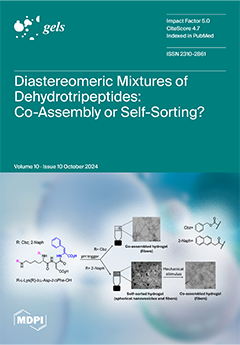Using free microorganisms for industrial processes has some limitations, such as the extensive consumption of substrates for growth, significant sensitivity to the microenvironment, and the necessity of separation from the product and, therefore, the cyclic process. It is widely acknowledged that confining or
[...] Read more.
Using free microorganisms for industrial processes has some limitations, such as the extensive consumption of substrates for growth, significant sensitivity to the microenvironment, and the necessity of separation from the product and, therefore, the cyclic process. It is widely acknowledged that confining or immobilizing cells in a matrix or support structure enhances enzyme stability, facilitates recycling, enhances rheological resilience, lowers bioprocess costs, and serves as a fundamental prerequisite for large-scale applications. This report summarizes the various cell immobilization methods, including several synthetic (polyvinylalcohol, polyethylenimine, polyacrylates, and Eudragit) and natural (gelatin, chitosan, alginate, cellulose, agar–agar, carboxymethylcellulose, and other polysaccharides) polymeric materials in the form of thin films, hydrogels, and cryogels. Advancements in the production of well-known antibiotics like penicillin and cephalosporin by various strains were discussed. Additionally, we highlighted cutting-edge research related to strain producers of peptide-based antibiotics (polymyxin B, Subtilin, Tyrothricin, varigomycin, gramicidin S, friulimicin, and bacteriocin), glusoseamines, and polyene derivatives. Crosslinking agents, especially covalent linkers, significantly affect the activity and stability of biocatalysts (penicillin G acylase, penicillinase, deacetoxycephalosporinase, L-asparaginase, β-glucosidase, Xylanase, and urease). The molecular weight of polymers is an important parameter influencing oxygen and nutrient diffusion, the kinetics of hydrogel formation, rigidity, rheology, elastic moduli, and other mechanical properties crucial for long-term utilization. A comparison of stability and enzymatic activity between immobilized enzymes and their free native counterparts was explored. The discussion was not limited to recent advancements in the biopharmaceutical field, such as microorganism or enzyme immobilization, but also extended to methods used in sensor and biosensor applications. In this study, we present data on the advantages of cell and enzyme immobilization over microorganism (bacteria and fungi) suspension states to produce various bioproducts and metabolites—such as antibiotics, enzymes, and precursors—and determine the efficiency of immobilization processes and the optimal conditions and process parameters to maximize the yield of the target products.
Full article






